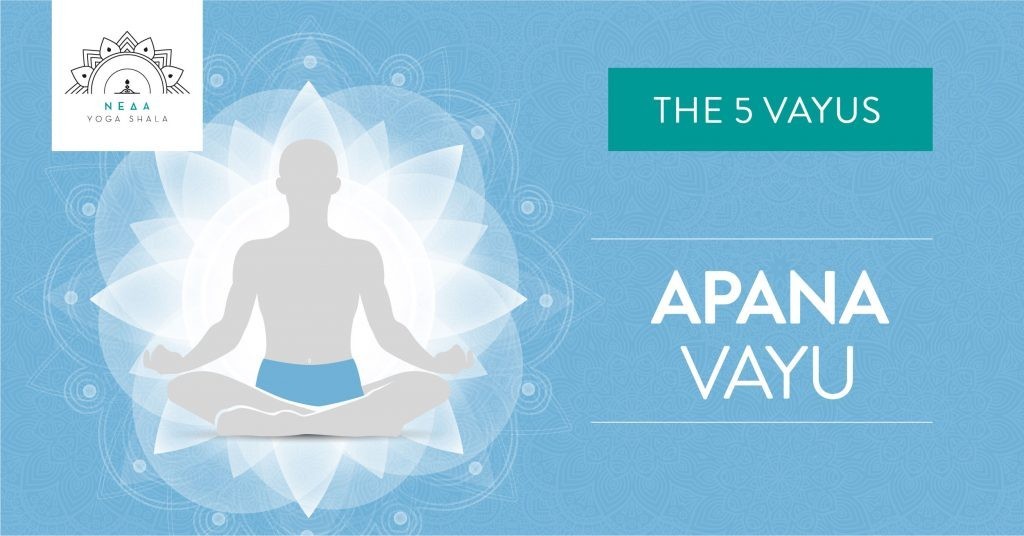
Apana Vayu
The Αpana Vayu is one of the five qualities of Prana. “Vayu” means “wind” and “apana vayu” means “wind that moves away”. In Hindu tradition, the 5 elements of Fire, Earth, Water, Wind and Ether are represented by the vayus. The apana vayu corresponds to the element of the Earth and to Muladhara chakra. It works in collaboration with the prana vayu, for intake and expulsion.
It controls digestion, expulsion (excretion, urination, menstruation) and reproduction, and it is active in the pelvis and the lower abdominal area. It affects and is connected to the organs of the lower belly; the large intestine, the colon, the kidneys, the bladder and the reproductive organs and their functions. Mainly, it refers to the energy in the body that flows downwards and outwards. It is manifested as consistency and stability regarding the processes of excretion, lovemaking and childbirth.
At a more subtle level, not only does the apana expel material waste, but also it expels anything undesirable or menacing to our health. It supports the immune system and helps preserve the freedom of the mind. When the apana is weak, the integrity of body-mind unification is threatened as well, and we can become vulnerable to diseases, fear, doubts, confusion and insecurity. When it is strong and balanced, the apana can provide a solid foundation for a healthy body, and a flexible, positive outlook in life. We experience the apana vayu when we feel grounded, as if we had roots like the trees do. This vayu, that governs expulsion, can be felt when we abandon all that is not useful to us anymore, such as our bodily waste, but also old habits or even toxic relationships.
Apana vayu is directly connected to liberation, whether it is physical, emotional or mental. Hatha yoga practices train the apana to function effectively, and they help us preserve and redirect this energy.
Through practice and awareness, almost all of the asanas can be performed in a way that provides access to the apana vayu. Besides, the activation of the apana in the pelvis and its redistribution is an important part in the asana practice in general. Connecting to the apana is also the aim of the mula bandha practice, which activates the muscles of the perineum. When this activation happens without unnecessary tension at the perineum, and also takes place deep in the belly, then the apana can flow through the shape of the asana.
Apana vayu can be explored and activated in various asanas and manipulations of the pelvis and the hips. In those poses, it is interesting to pay attention to the position of the pelvis, its connection to the lower belly and the activation of the legs. Through soft and deep breathing, and calm but steady awareness we can leverage the powerful force of the apana in order to stabilise and activate the various asanas without unnecessary strain.
Some examples of the asanas in which we can focus on the apana vayu are the following: Prasarita padottanasana, Vrikshasana, Ardha padma janu shirshasana, Baddha konasana, Shalabhasana Eka Pada Rajakapotasana.